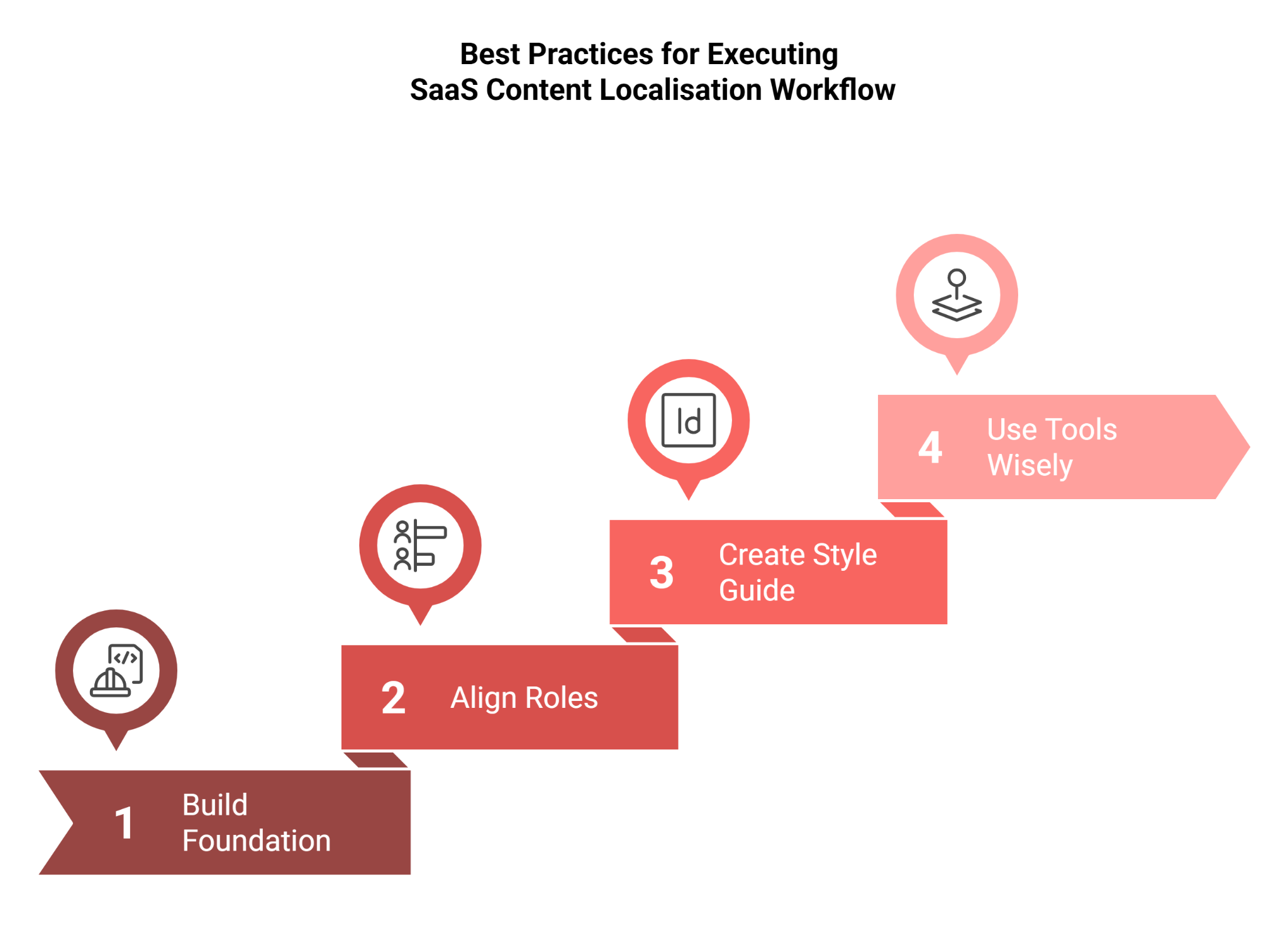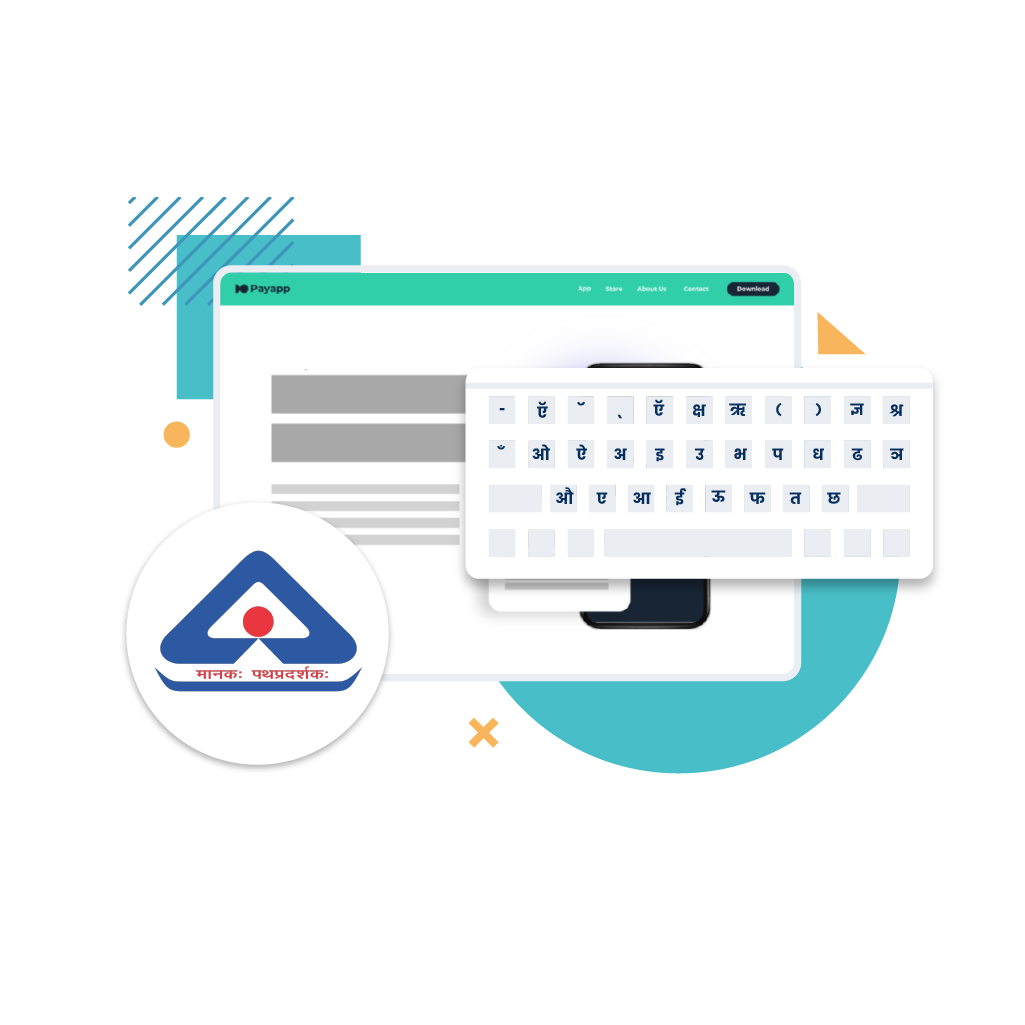When you think of expanding your SaaS product beyond your home market, it’s easy to assume that English is enough. But real traction starts when your message feels local, not just readable.
Take Netflix, for instance. It didn’t grow into India’s preferred OTT platform by offering Hollywood blockbusters alone. It invested in content and communication that reflected the preferences, languages, and cultural context of its Indian audience, be it through Hindi subtitles, Bengali dubs, or localised UI flows. That’s what helped them cross 280 million+ subscribers worldwide.
It’s not just translation, that’s real localisation at work.
For companies operating in or from India, B2B SaaS content localisation plays a similar role. Whether you’re expanding into international markets or addressing India’s multilingual user base, localisation isn’t a technical layer, it’s how engagement, trust, and product adoption truly take shape.
Because in SaaS, being globally scalable starts with being locally meaningful.
What Is B2B SaaS Content Localisation and How It Differs from Translation
B2B SaaS content localisation is the process of strategically adapting your product content, interfaces, messaging, and support materials to match the language, preferences, formats, and cultural context of a target market.
Now, many confuse this with simple translation. But translation alone won’t cut it if you’re serious about international growth. Translation converts text. Localisation adapts the entire user experience. That includes:
- Modifying interface elements and error messages
- Adjusting for currencies, date formats, and regulatory terms
- Shaping tone of voice to align with cultural expectations
- Adapting visuals and even CTAs to suit regional sensitivities
Let’s break it down simply: if translation is about changing the words, localisation is about changing the context so it feels native.
For example, translation might replace “Schedule a demo” with its literal equivalent in Hindi. Localisation, however, might reframe it altogether—perhaps to “Request a call-back” or “Book a session,” depending on what Indian users are more familiar with and more likely to act on.
Even between English-speaking audiences, localisation matters. A U.S. SaaS platform might say “Request a quote,” whereas for UK or Indian audiences, “Enquire for pricing” feels more natural. Similarly, while U.S. platforms talk in dollars and “zip codes,” an Indian SaaS product must adapt to INR and “PIN codes.”
The Business Case for Local-First Thinking
Thinking local-first doesn’t mean local-only. It means designing your SaaS content and strategy to adapt with minimal friction when entering new markets. Here’s why that matters:
- User trust begins with familiarity—70 %+ of users prefer content in their native language, even when they can read English.
- Localised UX = Better adoption—Content that aligns with regional workflows, terminologies, and visuals leads to smoother onboarding.
- Speed to market improves—when localisation is integrated into your SaaS development cycle early, not added as a patch later.
In a market like India with multiple languages and English dialects alone, adopting this approach gives your SaaS product an inherent scalability advantage, even before your B2B brand goes global.
Benefits of SaaS Content Localisation for Market Expansion
Before entering new markets or scaling across linguistic segments within your own, SaaS companies must consider not just how their product works, but how it speaks. Because users engage with what they understand, and trust what sounds familiar.
Here are the core benefits content localisation brings to SaaS businesses expanding into new regions:
- Operational Readiness for Diverse Markets: Instead of retrofitting content each time you scale, a localisation-ready content structure lets you expand faster. You avoid rework, reduce dependency on ad-hoc translations, and maintain consistency across geographies.
- Stronger Customer Engagement: When content aligns with local terminology and tone, users are far more likely to feel that your product was made for them. It creates trust and lowers perceived friction from the very first interaction.
- Enhanced Product Discovery: Localised onboarding, support guides, and UI flows make it easier for new users to navigate features. This has a direct impact on activation, usage depth, and long-term retention, specifically in markets where English is not the first language.
- Better SEO Performance: Localisation enables your brand to rank for region-specific keywords, native search phrases, and local intent terms. It’s not about content volume, but how well it matches local search intent.
Key Content Types to Prioritise in SaaS Localisation Strategy
Not every content asset deserves equal attention in your first localisation cycle, but overlooking the critical ones could cost conversions. SaaS teams localise strategically with Reverie’s Content Localisation Solution, focusing on content that directly supports acquisition, onboarding, and retention.
Below is a breakdown of high-impact content types worth prioritising in SaaS localisation:
Content Type | Localisation Focus |
Product UI and Microcopy | Menu labels, tooltips, notifications, and form fields—terms that directly affect day-to-day usability. |
Onboarding Flows | Welcome flows, tooltips, walkthroughs—tailored to reflect region-specific expectations and terminologies. |
Support and Help Docs | Self-service content must be easy to understand in native terms, mainly for support-heavy workflows. |
Landing Pages | Localised headlines, CTAs, pricing logic (INR, tax terms), and social proof aligned to each market’s decision-making norms. |
Resource Centers and Blogs | Educational and SEO content adapted to reflect local examples, pain points, and keyword behaviour to drive organic traffic. |
Legal and Compliance Content | Privacy policies, refund terms, disclaimers, and consent flows must comply with regional laws and be clearly understood. |
Email and Lifecycle Campaigns | Rewriting subject lines, call-to-actions, and tone to match local communication expectations across onboarding and upsell workflows. |
Best Practices for Executing a Scalable SaaS Content Localisation Workflow
For fast-moving SaaS teams, localisation can quickly become chaotic with scattered spreadsheets, inconsistent messaging, and delays in release cycles. What starts as a quick translation task often rises into an operational bottleneck.
Below are structured practices that help streamline localisation without compromising quality:
1. Build from a Localisation-Ready Foundation

- Design your content and UI to support multilingual expansion early on (e.g., flexible layouts, date/time formats).
- Avoid hardcoding text or culturally specific visuals into core product components.
- Maintain content modularity, so only localised elements need updates later.
2. Align Internal Roles and Ownership
- Appoint a localisation lead who coordinates between product, marketing, and compliance.
- Set up collaboration channels between content creators, translators, and regional reviewers.
- Establish structured approval flows—especially for product UI, legal terms, and customer-facing assets.
3. Create and Maintain a Style Guide
- Develop a central style guide with tone, terminology, grammar, and formatting rules for each language.
- Use shared glossaries and controlled vocabularies to ensure consistency across regions.
- Keep it updated as your product and brand voice evolve.
4. Use Localisation Tools Wisely
- Use platforms like Reverie’s Anuvadak to centralise workflows, reuse translations, and reduce manual effort.
- Combine machine-assisted translation for speed with human review to preserve cultural nuance and brand consistency.
- Integrate localisation into your content and product release cycles to avoid delays and reduce rework at scale.
How Reverie’s Anuvadak Accelerates SaaS Website Localisation
Managing multilingual websites shouldn’t mean slowing down releases or complicating workflows for SaaS businesses. Anuvadak is purpose-built for this challenge, offering an end-to-end localisation platform that integrates seamlessly into your content and product pipeline.
The following is how Anuvadak supports every phase of your localisation journey:
- Fast and Accurate Translation: Anuvadak uses an Indian language-optimised neural machine translation engine to localise website content in real time. It auto-detects and translates new content, ensuring users across regions always access the most updated version in their language, while keeping consistency through intelligent review routing.
- Manage with Complete Control: The platform eliminates the need for separate infrastructure by bringing subdomain handling, settings management, and version control into a unified interface. Localisation managers can easily oversee the full process, cut overhead, and maintain consistency across markets.
- Track Progress with Built-In Analytics: Anuvadak’s analytics dashboard helps teams track progress, engagement, and language-specific performance. From translation status to user behaviour insights, you gain visibility to optimise both operations and user experience in multilingual setups.
- Cultural and Linguistic Precision: Beyond translation, Reverie offers transliteration and regional adaptation, ensuring your brand voice and terminology resonate in every market, especially important in a linguistically diverse country like India.
Making Content Localisation a Strategic Advantage in SaaS
Successful market expansion depends on communicating your value clearly and culturally in every new region. That’s where content localisation shifts from being a tactical effort to a strategic differentiator.
When done right, localisation improves product onboarding, drives engagement, builds trust, and accelerates customer acquisition. But scaling that across markets and languages demands more than manual workflows and translation tools. It requires process, ownership, and the right platform.
Anuvadak brings all of that together, offering automation, control, and cultural precision tailored to the needs of B2B SaaS companies. It transforms localisation from a hurdle into a growth enabler, giving your teams the confidence to go multilingual without losing momentum.
Experience it for yourself—book a free demo and see how Reverie helps you go multilingual, without going manual.
Faqs
What makes content localisation essential for B2B SaaS companies?
Localisation goes beyond translation. It adapts your product interface, content tone, legal copy, and workflows to regional expectations, ensuring relevance, compliance, and customer trust in every market.
Where should B2B SaaS teams start with content localisation?
Start with your product UI, onboarding content, support documentation, and pricing pages. These assets shape first impressions and directly influence user activation and conversion.
How does Reverie help SaaS companies streamline localisation?
Reverie’s Anuvadak platform automates website translation, manages multilingual versions centrally, and integrates with your existing CMS, reducing manual load while ensuring content accuracy and speed at scale.
Can Indian SaaS businesses use Reverie for regional language expansion?
Yes, Reverie specialises in Indian language localisation, helping SaaS companies localise for 22 Indian languages—making your product accessible across India’s vast linguistic user base.
What business impact does SaaS localisation deliver?
SaaS companies see faster user adoption, lower churn, better SEO visibility, and stronger market penetration when content aligns with local language and cultural expectations, particularly when supported by platforms like Reverie’s Anuvadak.

